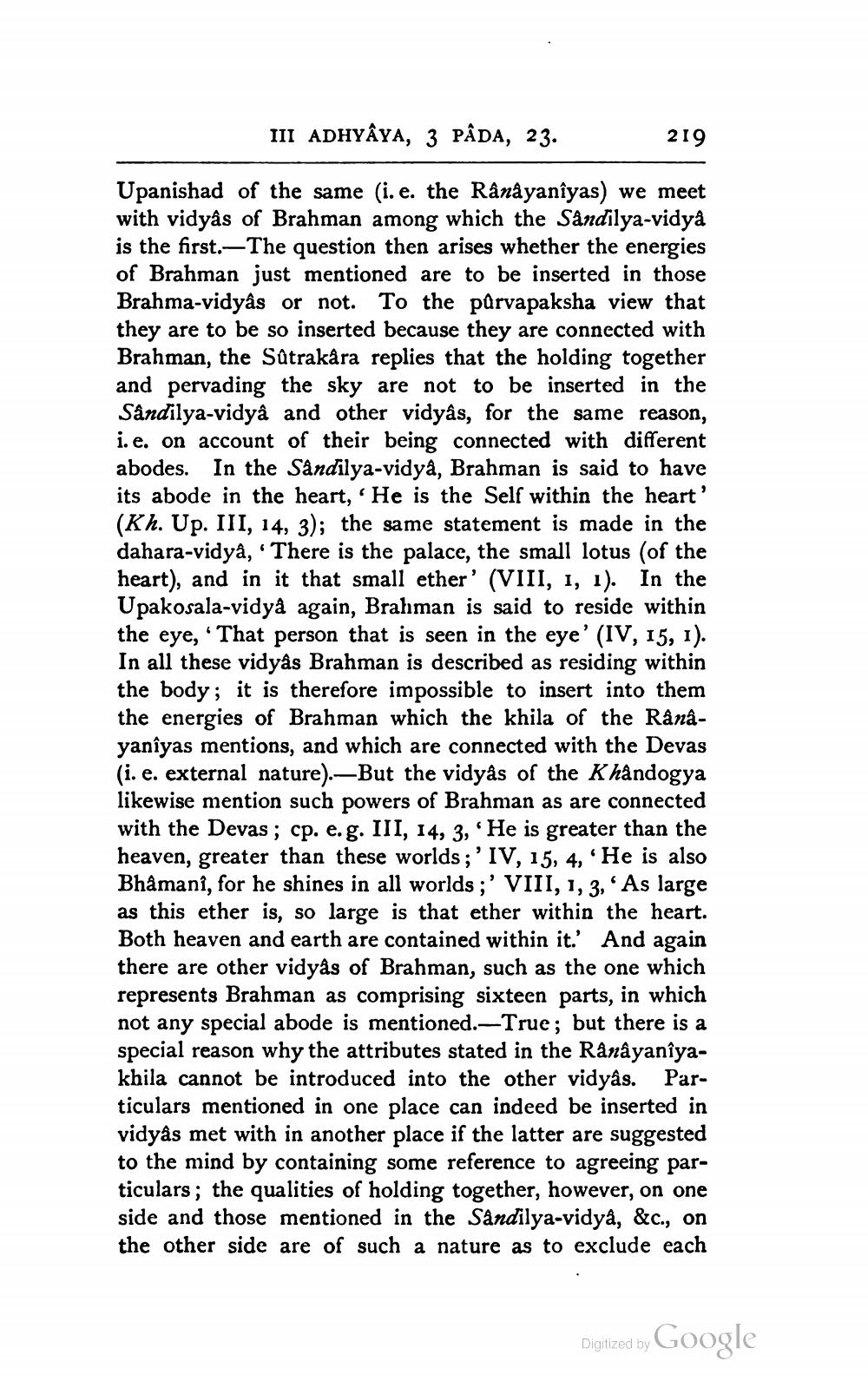________________
III ADHYAYA, 3 PÂDA, 23.
Upanishad of the same (i. e. the Rânâyanîyas) we meet with vidyâs of Brahman among which the Sândilya-vidyâ is the first. The question then arises whether the energies of Brahman just mentioned are to be inserted in those Brahma-vidyâs or not. To the pûrvapaksha view that they are to be so inserted because they are connected with Brahman, the Sûtrakâra replies that the holding together and pervading the sky are not to be inserted in the Sândilya-vidyâ and other vidyâs, for the same reason, i. e. on account of their being connected with different abodes. In the Sândilya-vidyâ, Brahman is said to have its abode in the heart,' He is the Self within the heart' (Kh. Up. III, 14, 3); the same statement is made in the dahara-vidyâ, 'There is the palace, the small lotus (of the heart), and in it that small ether' (VIII, 1, 1). In the Upakosala-vidyâ again, Brahman is said to reside within the eye, 'That person that is seen in the eye' (IV, 15, 1). In all these vidyâs Brahman is described as residing within the body; it is therefore impossible to insert into them the energies of Brahman which the khila of the Rânâyanîyas mentions, and which are connected with the Devas (i. e. external nature).-But the vidyâs of the Khandogya likewise mention such powers of Brahman as are connected with the Devas; cp. e. g. III, 14, 3, 'He is greater than the heaven, greater than these worlds; ' IV, 15, 4, 'He is also Bhâmanî, for he shines in all worlds;' VIII, 1, 3, 'As large as this ether is, so large is that ether within the heart. Both heaven and earth are contained within it.' And again there are other vidyâs of Brahman, such as the one which represents Brahman as comprising sixteen parts, in which not any special abode is mentioned.-True; but there is a special reason why the attributes stated in the Rânâyanîyakhila cannot be introduced into the other vidyâs. Particulars mentioned in one place can indeed be inserted in vidyâs met with in another place if the latter are suggested to the mind by containing some reference to agreeing particulars; the qualities of holding together, however, on one side and those mentioned in the Sândilya-vidyâ, &c., on the other side are of such a nature as to exclude each
Digitized by
219
Google




